|
METAR OBBI 050600Z 33012KT CAVOK 39/18 Q1002 NOSIG June 5th, 1984 Flying on patrol over the Saudi Desert, a [ USAF Boeing E-3 Sentry AWACS ] picks up 2 blips on RADAR piercing out of the Iranian air base of [ Bushehr | بوشهر ]. Identified as [ IRIAF | القوات الجوية لجيش الجمهورية الإسلامية الإيرانية ] [ McDonnell Douglas F-4 Phantom II ]s, their presence is reported and tracked, vectoring towards Saudi airspace. After a number of radio attempts to turn the F-4s back, 2 [ RSAF | القوات الجوية الملكية الـسعودية ] [ McDonnell Douglas F-15 Eagle ]s were directed to intercept, resulting in one of the most confusing bits of comprehensively recorded history. Battling the [ Iran Iraq War | حرب الخليج الأولى ], Iran was on the offensive, following earlier Iraqi aggressions that destroyed the oil refinery island of [ Kharg | جزيرة خارج ]. Actions that led to a War within a War. Some Background: Early 1982 - The Tanker War As the stale war progressed, tactfully in April 1982, Iran devised an economic battle plan with its ally Syria, to block or at least limit, Iraqi oil from funding its war machine. The idea was to block the oil from reaching the Mediterranean to the north, while at the same time attacking ports and oil refineries next to [ Basra | البصرة ] in the south. Iran was hoping that financial starvation to a costly war can tip the scales in its favor. Iran further escalated the situation by threatening the closure of the [ Hormuz Strait | مضيق هرمز ] if other countries aided Iraq. Practically intimidating the entire Gulf and threatening global oil supply. Starved of funding, Iraq sought salvation with Jordan and was quick to open a pipeline leading to the Red Sea. Other Gulf countries came together and backed Iraq to close the financial gap, providing diplomatic and logistical support. 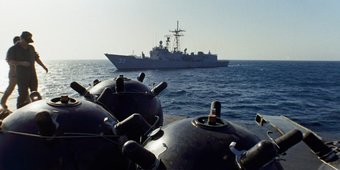 Iranian Water Mines Caught in Gulf Iranian Water Mines Caught in Gulf Cornered and ostracized by regional and international communities, stressed with an excessively violent border war, Iran used regional instability to influence world diplomacy and gain attention. This intimidation for Iran’s short revolutionary inception, banished it from the international community and labeled it as radically unstable. The economic battle was taken a step further by Iraq threatening the destruction of any vessel or ship headed in or exiting northern Iranian ports in the Gulf. Iran does the same adding the threat to any vessel aiding Iraq in the Gulf. Foreign ships became targeted with constant attacks from both sides, forcing the conflict on to a global stage. 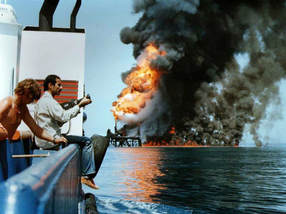 Reality of the Tanker War Reality of the Tanker War March 1984, Iraq destroys the Iranian Port of Kharg Island, in retaliation to the destroyed southern facilities. After a number of small skirmishes and intimidating runs on Gulf countries, Iran retaliates. On May 13th, 1984 Iran attacked and destroyed a Kuwaiti tanker carrying Iraqi Oil transiting Bahraini Waters. Five days later, Iran attacked another ship, this time Saudi flagged in Saudi waters. Iran later laces the entire Gulf with surface and submerged Sea Mines, causing major disruptions in Global supplies. Despite the military presence of major global powers and regional forces, these acts of aggression towards noncombatant interests continued on both sides throughout the war. Resulting in an estimated 546 commercial vessels destroyed, killing 430 sailors from at least 50 countries. Some Background: 1977→1986 - Peace Sentinel With Iran in constant tension within the region, a cycle of unstable Governments, plus multiple political revolutions, topped with the rise a radical authority, the world was vigilant and the region feared the chaos. Nervous and underpowered, the Gulf countries of the late 70’s, led by Saudi, opted to arm themselves, leading to the largest US arms deal in history. The Peace Sentinel Program was a complete plan to build up and modernize Arab military strength. The controversial program was segmented into two parts referred to as Peace Shield and Peace Sun. The United States government was to provide AWACS and Air Tanker units. On top of the air defense units, America provided the latest fighters with all the technology, training, and arsenal to keep them going for decades ahead. 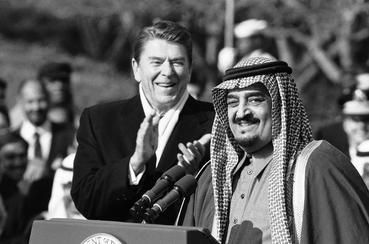 King Fahad of Saudi with US President Reagan King Fahad of Saudi with US President Reagan The deal was initiated by American President Carter in 1978, but due to political pressure and the reasonable fear of radical misuse; the deal was stalled, amended, halted, then with Reagan in office, completely approved with ad-dons?! The deal included Fighter jets, Air Tankers, AWACS, and a full rebuild of air defenses. Saudi started to receive its F-15s in August 1980, just one month before the Iran Iraq war. Immediately utilized in the ongoing conflict, the RSAF was regularly training its pilots and organizing its ranks of communication. The pilots mainly flew routine CAP missions on the eastern front and practiced midair refueling with the Americans, well within the borders. In September of 1980 and with the start of the War, the US deployed four E-3 AWACS Sentinels to help patrol the area. The AWACS presented a detailed RADAR view of what was happening in Iran and gave regional defenses enough time to respond before anything drastic can happen. Coupled with a wider communications range, the Aircraft was extremely effective in monitoring the Shipping Lanes reassuring the international community. Jun 5th, 1984 - A Cruel Dance The details that follow are almost impossible to confirm, but thanks to the many third-party reports and official sources some light can be shed on the happenings of the indecent. 09:00z USAF E-3 AWACS tracks and reports two Iranian fighters heading straight to Saudi. The unproven Saudi command rushes to consolidate its options, all levels of command were alerted, this was Go Time! Saudi command identifies two of their F-15s refueling over the eastern coast and directs them to intercept. The Pilots are directed and instructed via relay from USAF AWACS, within minutes they receive their orders and are vectored to intercept. A marvel of sophistication for the time, the F-15 with its formidable instruments and equipment picks up the two targets [ Beyond Visual Range BVR | خارج مدى الرؤية البصرية ]. Saudi Command takes the decision and orders the fighters to engage. Each F-15 reported firing one missile. 09:33z confirmation of a kill was declared by Saudi. With Iranian rescue helicopters en route, RSAF dispatches its [ Northrop F-5 ]s to secure the crash area, reportedly “shooing” Iranian rescue teams away. Within half an hour of the incident, Iran scrambles 11 fighters and directs them towards Saudi. RSAF answers in kind, and matches the incoming force. Iran then advances 3 of its 11 F-4s and Saudi counters them with 6 F-15s. Iran was then quick to back down, avoiding a massive secondary conflict. The Skies over the Gulf have never been so tense since. Both targets were confirmed hit, but only one was confirmed killed. Later reports from Ejection Seat manufacturer Martin-Baker and F-4 Manufacturer McDonnell Douglas, show Capt Homayoun Hekmati and his RIO 1st Lt. Sirous Karimi to be hit and destroyed. The other F-4 piloted by Ebrahim Dalal Khosh was also reported destroyed. On record, this is the only incident were 2 McDonnell Douglas fighters faced off in combat. Iranian Command dated all three names as KIA on June 5th, 1984, this is also correlated by the Martyrdom lists of Iran’s Pilots named “ Fallen Eagles ”. No parachutes were reported by RSAF pilots, indicating that the pilots never managed to eject. Oddly enough Iran still maintains that the second fighter nursed itself back to Kish Island, over 200nm West of the incident. Even though Bushehr was not more than 80nm north. The wreckage was never found, but days later Oil Rigs reported floating aircraft parts. 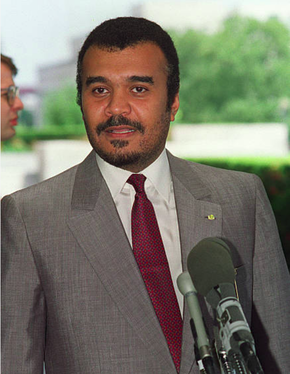 Prince Bandar bin Sultan Saudi US Ambassador Prince Bandar bin Sultan Saudi US Ambassador [ Prince Bandar bin Sultan | الامير بندر بن سلطان بن عبد العزيز آل سعود ] a Saudi ambassador to the US was quoted by the NY Times saying “We think it is a pity we had to be dragged into this conflict. We are determined to defend our country. People should not mix up moderation with consent. We do not consent, nor do we find it amusing to be attacked or for our interests to be attacked” bolstering America’s impression to the idea of a moderate ally amid a radically volatile region. This was Prince Bandar’s first year as ambassador in the US. As for the RSAF pilots, reportedly they were hesitant to engage according to ABC News. Multiple requests had to be done by the Saudi AWACS operator before the pilots actually directed their aircraft to the target, reported the Washington Post. Both pilots were at best finishing their training, and the unproven Saudi command had yet to engage in active modern warfare. Never the less, both pilots intercepted and attacked the intruders. Some sources report both RSAF pilots firing at BVR, and others indicate that one fired the medium range RADAR guided [ AIM7 Sparrow ] missile, while the other missed his opportunity and was forced to fire a short range heat seeking [ AIM9-L Sidewinder ] missile. Saudi further reports that the attacking aircraft had no clear target, and were probably out hunting ships. Still to this day, Iran denies any intent to attack Saudi and claims that the fighters were well within their borders. Given that the incident happened over an island about 10 miles north of the Saudi isle of [ AlArabi | العربية ] meaning “the Arab” called [ AlFarisi | فارسي ] meaning “the Persian” owned by Iran, this might be plausible. There are some reports that claim that a Capt. Bill Tippin was in one of the F-15s and was probably the one who engaged the F-4s in some way or another. The name never appears in any of the official documents or pilots roasters. Later a high ranking official Gen. Spence M. Armstrong was quoted in a book detailing the incident and denying the existence of a Capt. Tippin on his roster or any USAF pilot in either Eagle. Gen Armstrong also indicated that there was a second pair of Iranian [ Grumman F-14 ] fighters heading straight to the city of [ Dahran | الظهران ], but they were abruptly discouraged after the RSAF response and turned back before coming close. Furthermore, the book identifies, clarifies and confirms, that trigger authority was with the Saudis, in command, communication, and pilots at all time. Although the names of the RSAF pilots are kept. In the usual Saudi manner, reportedly both fighter crews received brand new Mercedes 500 SELs, as part of a gift package from the Saudi King in appreciation of their sacrifices and efforts defending their nation.
In times of conflict, details are easily distorted and situational awareness of the battlefield is never complete, this is commonly referred to as the Fog of War. Even in our technologically advanced existence and ethically mature historical preservation, we still face influences veiling the truth. The Tanker War was historically recent, technologically we were more than capable of covering and reporting such events as they unfold. Numerous international TV and Radio reporters were present in the region, as well as constant updates from officials about the conflict. That said, information about this war still has some major gaps to fill. Propaganda and PR, manipulation of the people, misinformation and even simple overlooked mistakes are key weapons in misleading and confusing the enemy. On the other hand, that same effort is being used to reduce internal social discontent, blame shifting, and causes confusion by deceiving the civil masses. The Iran Iraq war ended the lives of 1.2 million humans, wreaked even more lives in despair, with no actual gain. Boarders were not extended, resources and infrastructure were decimated on both sides and financially both fell victim to the [ IMF | صندوق النقد الدولي ]. Comically, and in front of a global audience, both countries claimed Victory, and both populations celebrated the victory. They even erected massive monuments to commemorate their achievements. Sadly, even with endless documentation, digital telemetry, and countless sources, we know more about the [ Battle of Gaugamela ] than the digitally recorded information gathered in this modern war. Confused and misled, this is where this story ends, with no hope for truth in War!
1 Comment
|
38AB
The Aviator.. Flight Recorder
May 2019
Departments
|
Services |
Management |
Copyright © 2018 bahrainaviators.com
|

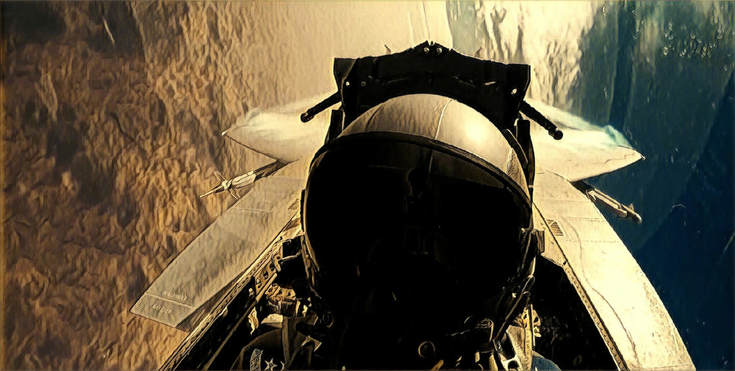
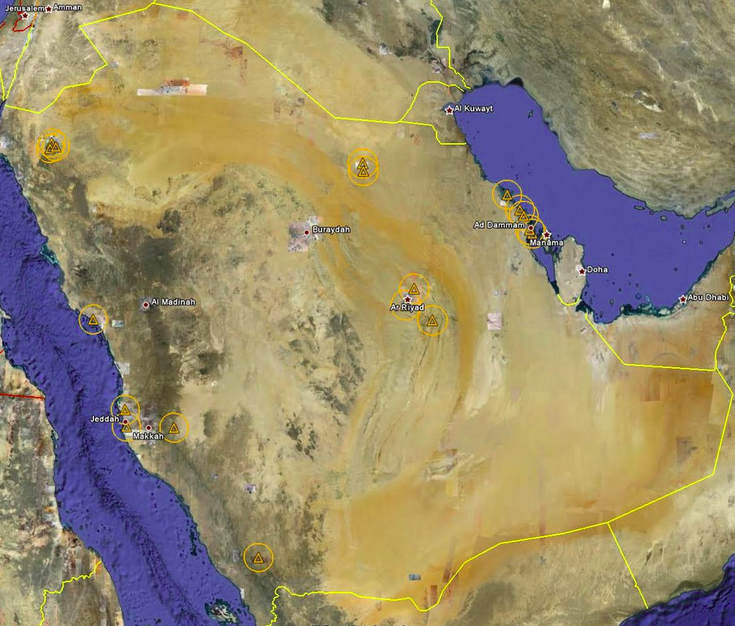





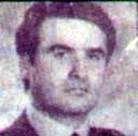

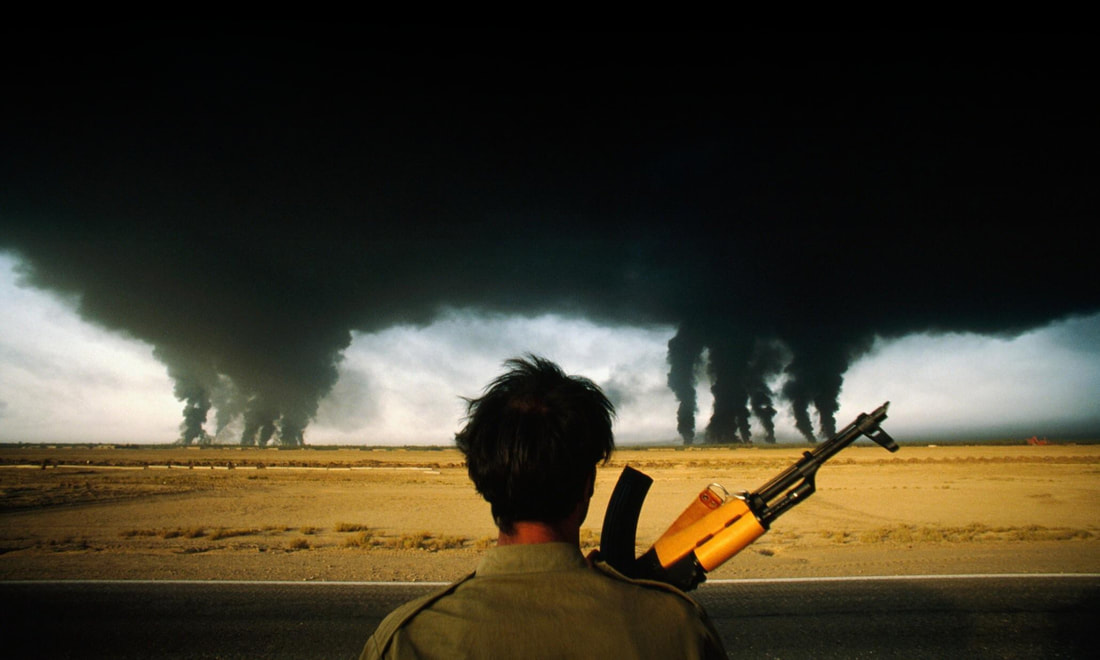
 RSS Feed
RSS Feed